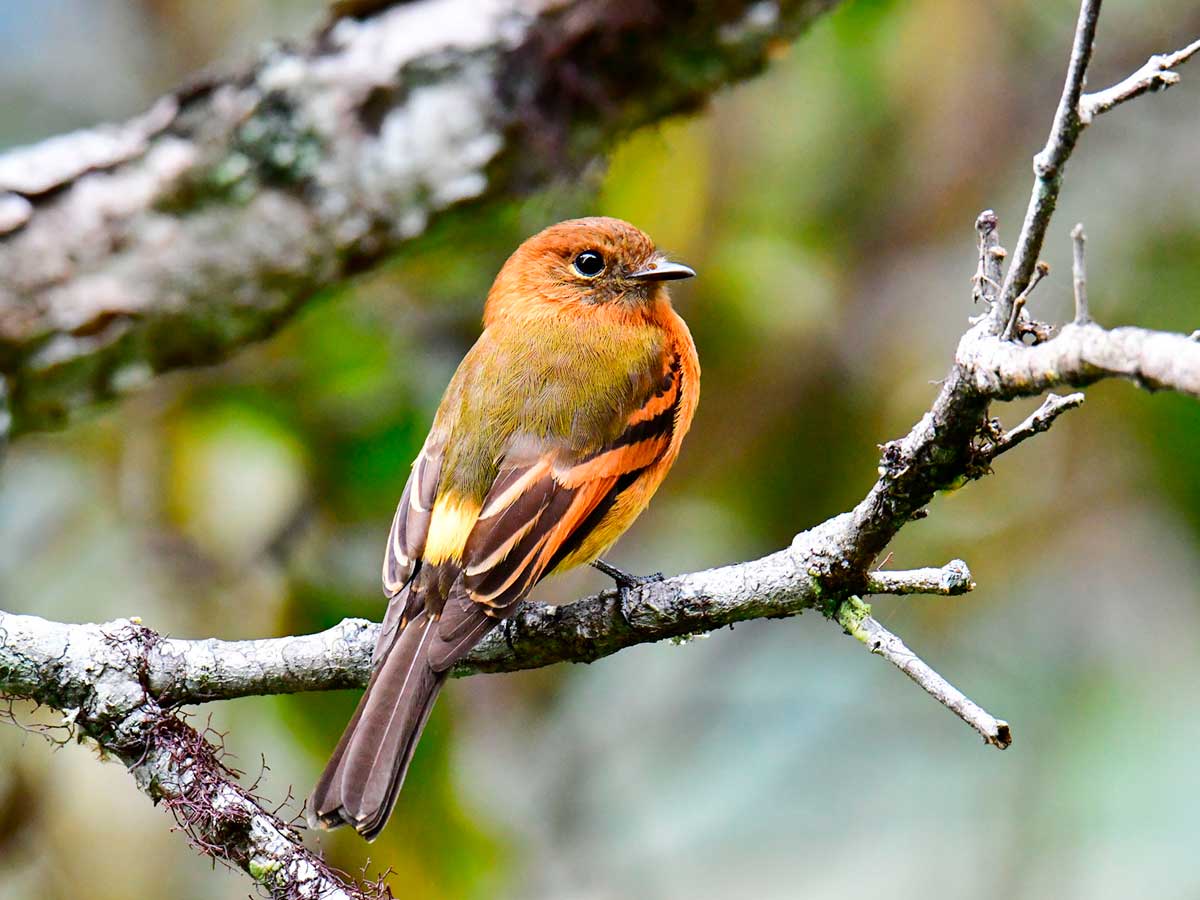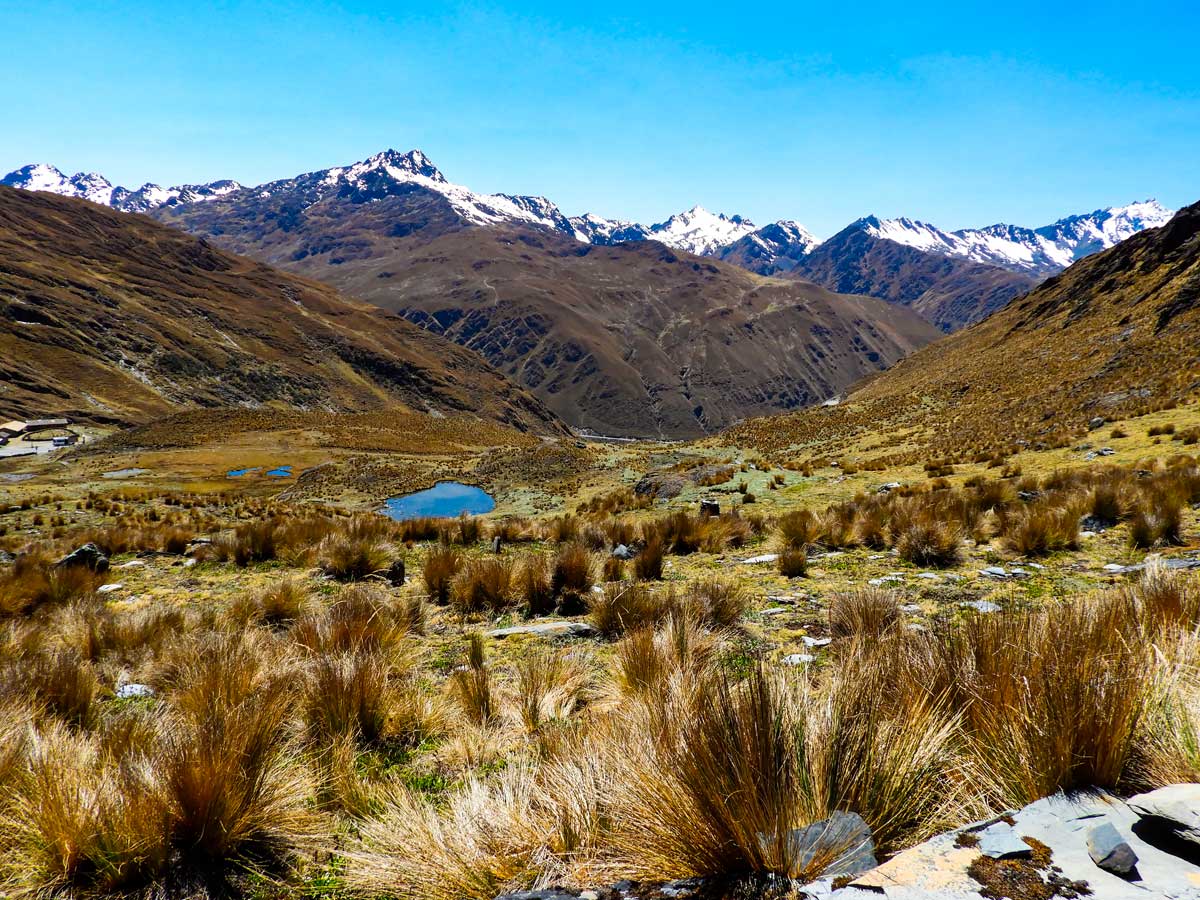
With an unsurpassed view of the snow-capped Verónica, this Private Conservation Area has a privileged location in the Andes of Cusco. Here you can see the graceful flight of condors and hawks, as well as the presence of deer, spectacled bears and hummingbirds and, occasionally, the elusive Andean bear. This destination is also one of the best scenarios in the world for bird watching, as it is home to unique species such as the Andean churrete or the pechicenizo bull. Its mountains are ideal for cycling and long, relaxing walks.
The avifauna of this area of ​​Peru was studied since 1869 by Sclater and Salvin, Berlepsch and Stolzmann (1906).
In 1915 an expedition of the Machu Picchu Geographical Society was carried out, led by Frank M. Chapman and George K. Cherrie (July 1-24, 1916), and by Harry L. Watkins (April 3-25, 1917).
From September 1974, June 1976, 1977, and 1978, October 1978, and August 1979, staff from the Louisiana State University (LSU) Museum of Zoology visited the valley to conduct an inventory and increase knowledge of the birds and small mammals. Three main camps were made along the Ollantaytambo-Quillabamba highway through the Abra Málaga (3900 m), and a fourth was at Kiteni (450 m), after Quillabamba.

Leaving from Ollantaytambo, the first place to visit is Las Peñas, located 15 km away. So called because there are remains of Inca stone constructions with the same name in the place. Nearby, among the bushes and on the roadside you can see: Chestnut-breasted Mountain-finch, Tyrian Metaltail, Shining Sunbeam, White-tufted Sunbeam, Puna Tapaculo, White-browed Conebill.
The Abra Málaga Thastayoc is the highest point on the route and is the safest and most accessible area to see the Royal Cinclodes. To do this, you must follow the path that begins at the checkpoint, located at the highest point of the Abra. From there, follow the path until you reach a Polylepis forest located at 4,150 meters high. You can also see the Stripe-headed Antpitta, Blue-mantled Thornbill, Shining Sunbeam, Puna Tapaculo, White-browed Tit-spinetail, Tawny Tit-Spinetail. The route to this forest is very rugged and long. It takes between 2-3 hours to go through it.
Crossing the pass, descending the road, on the way to Quillabamba, the patches of vegetation next to the track are good places. There you will see the Puna Thistletail, Unstreaked Tit-tyrant, Creamy-crested Spinetail, Diademed Tapaculo, Thrush-like Wren, Rufous-chested Tanager, Buff-breasted Mountain-tanager, Chestnut-bellied Mountain-tanager, Scarlet-bellied Mountain-tanager, White-bellied Hummingbird.
In the area near the town of Carrizales it is possible to observe the Inca Wren.

The community of Abra Málaga Thastayoc, is located in the middle of a chain of snow-capped mountains of the Cordillera del Vilcanota, being La Verónica the most important and locally known as Huacaywillki, surrounded by lagoons, wetlands at the head of the basin, important for storage of water. There are also fragments of native forests of Polylepis or queuñas, which is the species that grows at the highest altitude in the world. In this area, evaluations of flora, avifauna, mapping, socio-economic diagnoses have been carried out, as well as monitoring plans for the care of the ecosystem, implementing different conservation programs, the main one being the afforestation and reforestation campaigns with native species and other conservation strategies.
The Abra Málaga Thastayoc forest ranges from 3,600 to 4,400 meters above sea level. It is made up of a homogeneous forest of Polylepis sp. and other endemic bird species.
One of the main activities on this route is bird watching or birdwatching. It is in the Polylepis forest and in the ACP buffer areas where several endemic species can be seen. The tour can start with:
It is the sector that continues after Ollantaytambo, with a dry climate and abundant vegetation where you can see some endemic birds such as: chestnut-breasted monterita, creamy-crested coliespina and cinnamon-colored sunbeam, while the Junín basket and red-fronted basket basket they can be found beyond the road. You can also see a great diversity of hummingbirds such as the green long-tailed hummingbird, purple-backed spine-beak.
It is the most visited part of Abra Málaga. From the road, less than a 30-minute walk at an altitude of 4,250 meters, you will find a Polylepis pepei forest and small fragments of Polylepis serícea on the slopes of the snow-capped Kosñirity.
Through a wide path you reach the first viewpoint where you can see the forest with several fragmented areas. The total route is 7 km, and you can choose the route that you like the most and the species you want to see. The main endemic species to see are: royal churrete, ash-chested bull, white-browed scissor; other species such as tawny earwig, puna cover, striped forehead basket, giant cone beak and others.
It is the area that is in the direction of Quillabamba, with a fairly humid climate, here there are other species of Polylepis accompanied by bamboo vegetation, and among the bird species you can see Marcapata coliespina, plain bull, tail-thistle of the puna, wavy tororoi, Parodi's hemispingo, and scarlet-bellied mountain tanager, among other species common to the area.
From the Community of Thastayoc, a one-two-day walk begins in the direction of the Choquechaca ACP, passing through the Kataccocha, Kelwaccocha and Komerccocha lagoons, and the pass of the Huaccractanca pass and snow-capped mountain, getting to appreciate the Queuña de Choquechaca forest. Several directions depart from here that can continue to Pumamarca, Huilloc community, Patacancha or Rumira Sondormayo.
A second alternative route is starting the walk from the Abra Málaga Private Conservation Area, then passes through the community of Panticalle, Alfamayo, Huyro, Santa María, Santa Teresa, to reach the Archaeological Center of Machu Picchu.
From Cusco, go to Ollantaytambo and spend the night. Most of the lodgings are comfortable but small and do not have a garage.
To go to Abra Málaga you must take the road to Quillabamba in a private car or taxi. Public transport has fixed departure times in the morning. On the route there is no cell phone coverage.
Tourist ticket cost is PEN 20 per person *
* This Private Conservation Area is part of the Network of Private Conservation Areas of the Cordillera del Vilcanota. With this ticket you can access all the communities of the ECOAN Community Network. The night in a room is S / 30 per person per night. And if you want to camp they are S / 10 per person. Does not include food or transportation.
The climate is rainy between the months of November to April, and mild with infrequent rains between the months of May to October. The temperature varies from -5 degrees in the Abra Málaga to 20 degrees in the Carrizales area.
